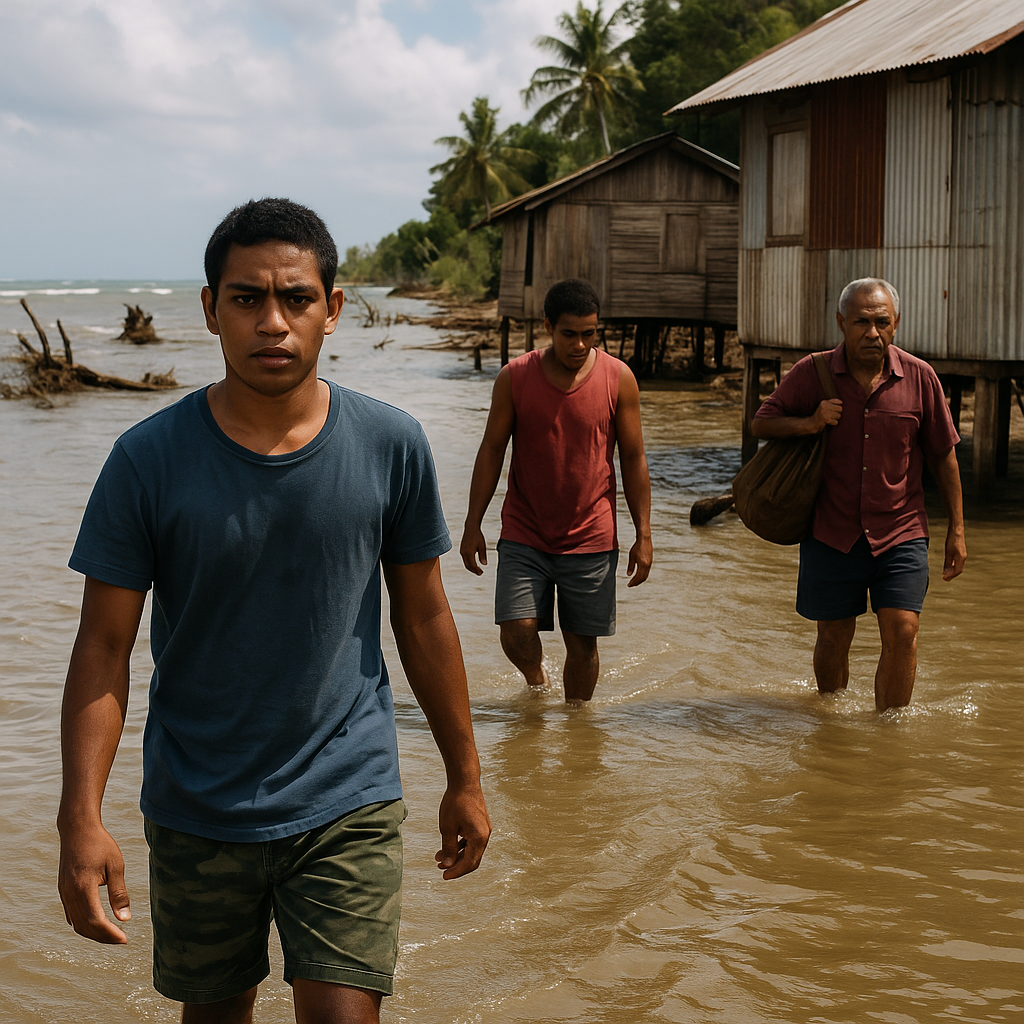Pacific SIDS Bolster Climate Resilience with Inclusive Early Warning Overhaul
Small Island Developing States (SIDS) in the Pacific face disproportionate exposure to climate extremes, including tropical cyclones, coastal flooding, drought, and sea-level rise.

- Country:
- Tonga
In a major milestone for climate resilience and disaster preparedness in the Pacific, the four-year CREWS Pacific SIDS 2.0 project has successfully concluded, significantly strengthening the region’s capacity to anticipate, respond to, and recover from weather- and climate-related hazards.
Launched in January 2021 and completed in June 2025, the US$ 4.8 million project enhanced multi-hazard early warning systems (MHEWS) in 14 Pacific Island Countries and Territories (PICTs) through strategic investments in governance, community preparedness, risk communication, and technical capacity. Despite formidable disruptions from COVID-19, the Tonga-Hunga Ha'apai volcanic eruption, and regional resource constraints, the project delivered a wide spectrum of transformative outcomes across regional, national, and community levels.
A Region at the Frontlines of Climate Risk
Small Island Developing States (SIDS) in the Pacific face disproportionate exposure to climate extremes, including tropical cyclones, coastal flooding, drought, and sea-level rise. Their dispersed geography, coupled with limited infrastructure and underfunded weather and disaster services, makes them uniquely vulnerable.
In response, CREWS Pacific SIDS 2.0—officially titled Strengthening Hydro-Meteorological and Early Warning Systems in the Pacific—sought to close gaps in early warning capacity while fostering inclusive, locally grounded solutions. It was funded through the Climate Risk and Early Warning Systems (CREWS) Initiative, and implemented by the World Meteorological Organization (WMO), in partnership with UNDRR, the World Bank’s GFDRR, and several regional partners, including SPREP, SPC, NIWA, BMKG, and national meteorological and hydrological services.
“The CREWS project has been transformative for Tonga and the Pacific. Through collaboration, we have strengthened our early warning systems and empowered communities to act early,” said Laitia Fifita, Director of the Tonga Meteorological Service.
Key Achievements Across the Pacific
Strengthening Governance and Strategy
-
Developed or supported early warning legislation and national strategies in Fiji, Samoa, Tonga, Solomon Islands, Tokelau, and Vanuatu.
-
Supported review and coordination mechanisms of the Pacific Meteorological Council (PMC) and the creation of a Partner Coordination Dashboard to enhance regional cooperation.
Enhancing Forecasting and Hydrology
-
Conducted hydrology assessments and upgraded flood forecasting tools in Fiji, Kiribati, Solomon Islands, Samoa, Tonga, and Vanuatu.
-
Introduced impact-based forecasting workshops in four countries, shifting the focus from “what the weather will be” to “what the weather will do”.
Advancing ICT and Data Sharing
-
Trained officials in 12 countries in the Common Alerting Protocol (CAP) and improved data integration with the WMO Information System (WIS 2.0).
Supporting Community Preparedness
-
Introduced or enhanced community-based early warning systems in FSM, Kiribati, and Niue, integrating traditional knowledge with modern warning approaches.
-
Supported local Standard Operating Procedures (SOPs) for drought response and severe weather alerts.
Empowering Women and Promoting Inclusion
-
Conducted the second Women in Leadership Workshop for Meteorology and Hydrology in Vanuatu, training over 30 women from 14 countries.
-
Delivered gender and disability-inclusive early warning sessions and promoted the UNDRR Inclusive Early Warning for All checklist at key regional forums.
-
Developed accessible messaging formats to improve reach to persons with disabilities and remote populations.
Building National Capacity
-
Hosted National Climate Outlook Forums in Tokelau, Samoa, and Solomon Islands.
-
Provided advanced training to national meteorological staff to sustain localized climate services.
Challenges and Lessons Learned
Despite its successes, the project faced hurdles including delays in procurement, governmental transitions, and resource limitations—common challenges in Pacific island contexts. However, by embedding initiatives within national programs and aligning with community needs, CREWS Pacific SIDS 2.0 has created resilient frameworks with long-term sustainability.
The integration of inclusive planning, community knowledge, and modern forecasting tools proved especially effective in strengthening trust and relevance of warning systems.
A Foundation for the Future
The momentum generated by CREWS Pacific SIDS 2.0 is already being channeled into new regional initiatives. Its outputs are being integrated into broader efforts such as Weather Ready Pacific and the Systematic Observations Financing Facility (SOFF).
A new follow-on initiative, titled “Scale Up Inclusive Early Warning and Action in the Pacific”, is currently in development. This next phase will:
-
Expand impact-based early warning systems
-
Deepen integration between meteorological and disaster response sectors
-
Prioritize inclusion, gender equality, and localized risk communication
-
Enhance data sharing and cross-border cooperation
The upcoming project will further operationalize lessons learned and elevate community ownership—critical to weathering the escalating impacts of climate change.
As climate extremes grow in frequency and intensity, early warning systems are no longer optional—they are life-saving infrastructure. The CREWS Pacific SIDS 2.0 project stands as a beacon of what is possible when international cooperation, regional leadership, and local engagement converge.
By reinforcing everything from national legislation to grassroots alert systems, and championing inclusive practices, the project has given Pacific nations a stronger voice—and stronger tools—to meet future climate challenges head-on.










